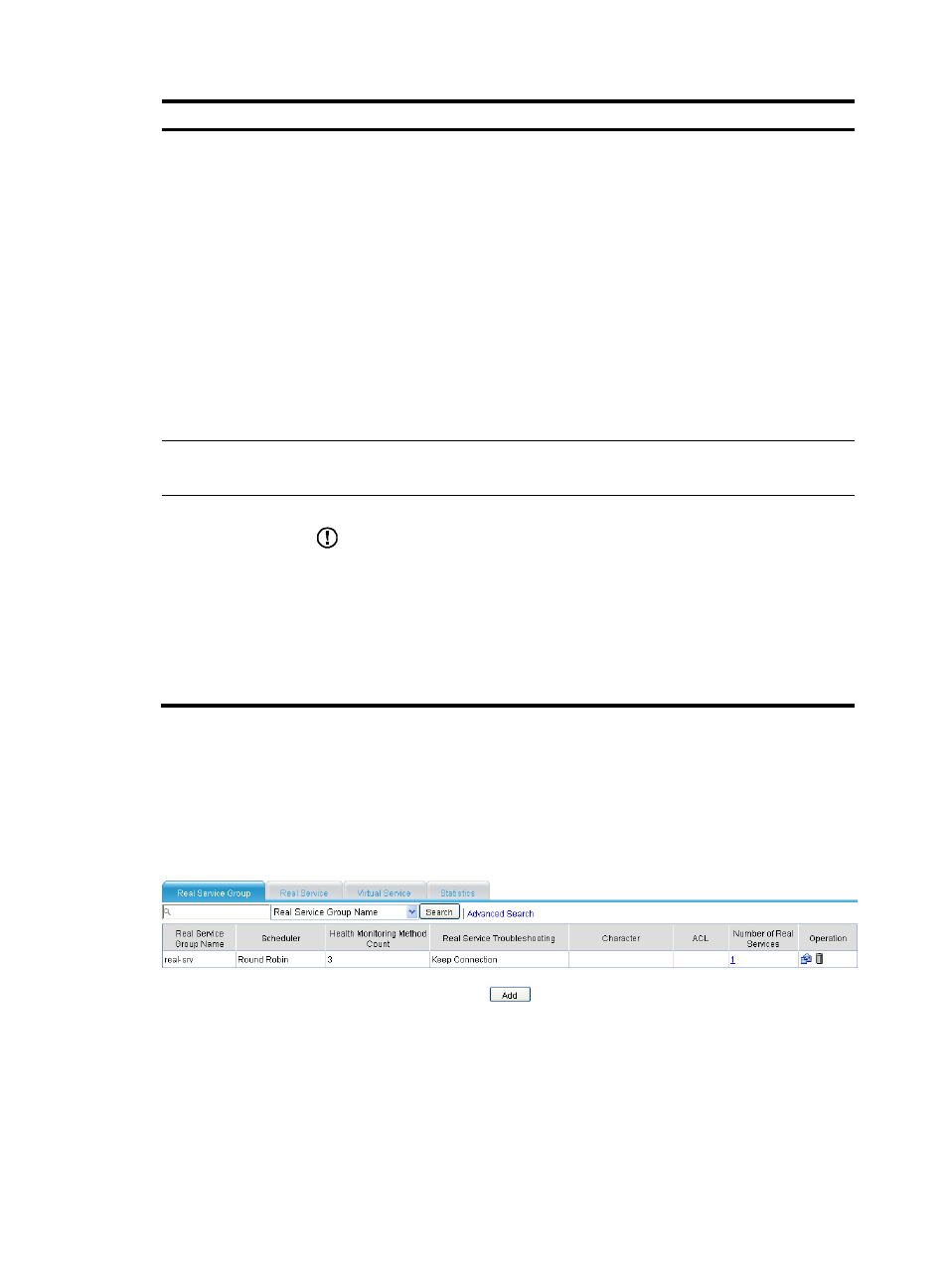Creating a real service group – H3C Technologies H3C SecBlade LB Cards User Manual
Page 21

15
Item Description
Ciphersuite
Preferred cipher suites for an SSL server policy to support
in SSL health monitoring:
•
RSA_RC4_128_MD5—Specifies the key exchange
algorithm of RSA, the data encryption algorithm of
128-bit RC4, and the MAC algorithm of MD5.
•
RSA_RC4_128_SHA—Specifies the key exchange
algorithm of RSA, the data encryption algorithm of
128-bit RC4, and the MAC algorithm of SHA.
•
RSA_DES_CBC_SHA—Specifies the key exchange
algorithm of RSA, the data encryption algorithm of
DES_CBC, and the MAC algorithm of SHA.
•
RSA_3DES_EDE_CBC_SHA—Specifies the key
exchange algorithm of RSA, the data encryption
algorithm of 3DES_EDE_CBC, and the MAC algorithm
of SHA.
Destination IP
Destination IP address for health monitoring.
If this parameter is not specified, the IP address of the real service is adopted.
Destination Port
Destination port number for health monitoring.
IMPORTANT:
•
ARP health monitoring and ICMP health monitoring do not support this parameter.
•
If this parameter is 0 (not specified), the port number of the real service is used for
heath monitoring (except RADIUS and SIP health monitoring).
•
H3C recommends that you specify a non-zero destination port number for health
monitoring based on the network environment.
•
For TCP and UDPNORMAL health monitoring, if both this parameter and the port
number of the real service are 0, the health monitoring fails.
Creating a real service group
1.
Select Load Balance > Server Load Balance > IPv4 from the navigation tree.
The Real Service Group tab appears.
Figure 14 Real service group
If you click the Number of Real Services link for a real service group, the Real Service tab appears,
displaying information about the real services that belong to the real service group.
2.
Click Add.
The real service group configuration page appears.
